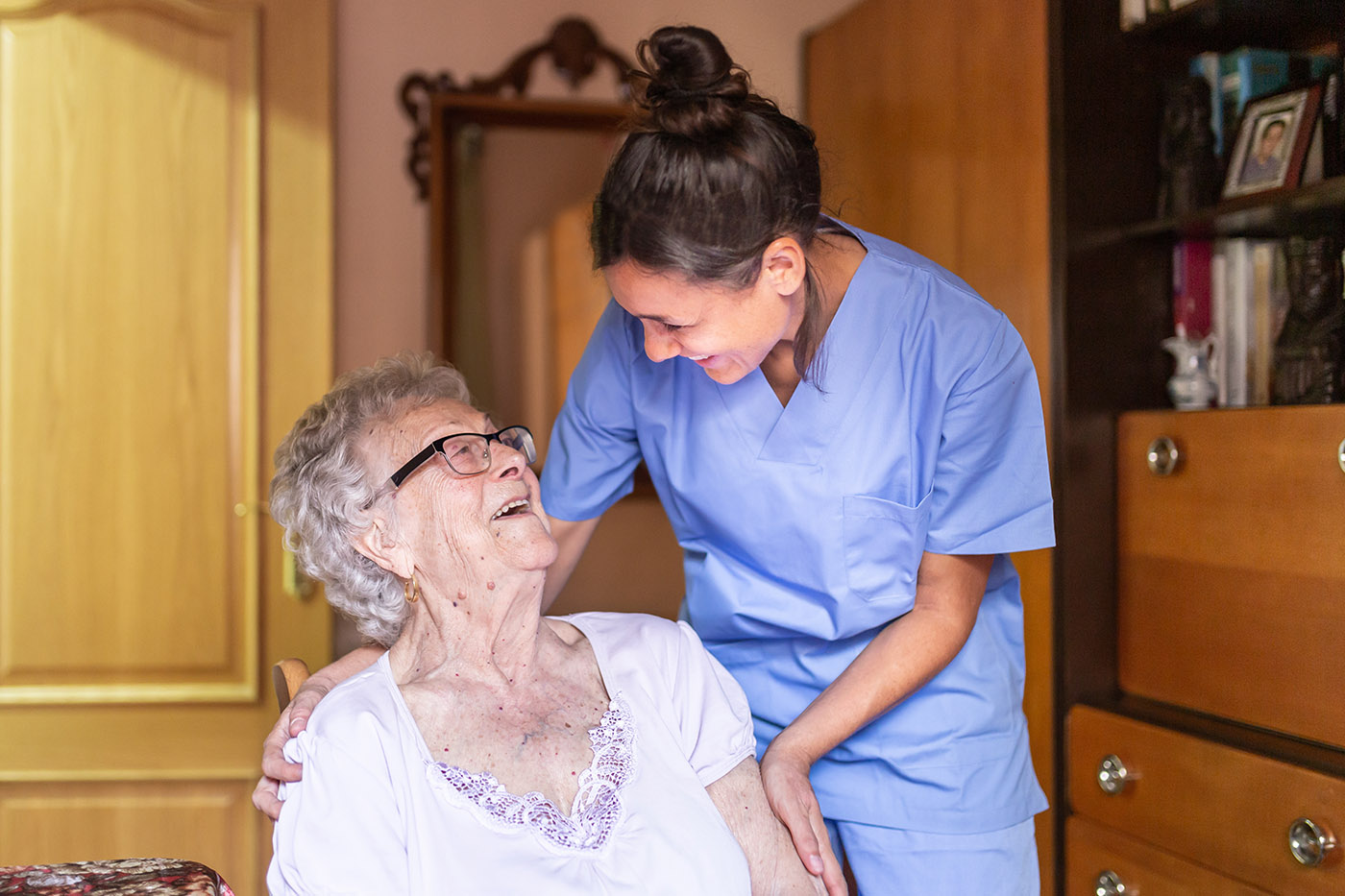
Enhanced funding in the American Rescue Plan (ARP) Act could increase access to home- and community-based services (HCBS) provided through state Medicaid programs. Section 9817 of the ARP Act, signed into law on March 11, authorizes states to receive a temporary 10 percentage point increase to the federal medical assistance percentage (FMAP) — the percentage of Medicaid costs the federal government will pay — for certain Medicaid home- and community-based service expenditures.
HCBS help older adults and people with chronic illnesses or disabilities live independently at home or in a community-based setting by assisting with everyday needs such as personal care, meal preparation or delivery, and transportation. These services divert individuals from institutions such as nursing homes or intermediate care facilities for people with intellectual and developmental disabilities. While states must provide Medicaid coverage for long-term services and supports in nursing homes, states have flexibility in whether and how they choose to offer most HCBS, including the option to cap the number of persons who can receive HCBS. As a result, HCBS vary from state to state.
Medicaid programs cover HCBS primarily through waivers authorizing states to target services to specific populations under Section 1915(c) of the Social Security Act. In federal fiscal year (FY) 2018, all but three states — Rhode Island, Arizona, and Vermont — offered HCBS through at least one Section 1915(c) waiver, totaling $49.7 billion, according to a 2021 Centers for Medicare & Medicaid Services (CMS) report. During the same period, Arkansas spent $1,058,511,880 on HCBS, of which $384,630,979 was spent on its section 1915(c) waiver programs (36.3% of all HCBS spending).
On May 13, CMS provided guidance to states on the implementation of Section 9817 of the ARP Act and outlined ways for states to use the savings from the temporary 10 percentage point FMAP increase on allowable HCBS. The enhanced funding will be available for services provided between April 1, 2021, and March 31, 2022, and will be applied on top of the state’s regular FMAP — 71.62% for Arkansas in FY 2022 — and other FMAP increases for HCBS such as the 6.2 percentage point FMAP increase from the Families First Coronavirus Response Act, not to exceed 95%.
Savings from the increased FMAP must be used to “supplement, not supplant” state HCBS funding in effect as of April 1, 2021, and to “implement or supplement the implementation” of activities that “enhance, expand, or strengthen” Medicaid HCBS-related services and infrastructure. The savings could be used to fund additional Medicaid-covered services such as home health care, personal care services, case management, school based services, or rehabilitative services. States could also use the savings to “enhance, expand, or strengthen” Medicaid HCBS through activities that support COVID-related needs or that support HCBS capacity-building and Long-Term Services and Supports (LTSS) rebalancing reform, an effort over the last couple of decades to shift and equitably balance the long-term services and supports funding from institutions to HCBS. Some of these activities may include:
- Increasing payment rates for home health agencies and Program of All-Inclusive Care for the Elderly
- Providing supports for family caregivers, such as payment for a service provider or personal protective equipment.
- Providing transition coordination services for individuals relocating from institutional settings to their homes or for the temporary relocation of residents from congregate settings to community-based settings to prevent COVID-19 infection during the COVID-19 public health emergency.
- Adopting new HCBS quality measures.
- Implementing new eligibility policies and/or procedures.
- Increasing HCBS waiver slots to reduce waiting lists.
- Addressing health disparities.
- Investing in infrastructure to incorporate HCBS into electronic health record systems.
States have until March 31, 2024, to reinvest the savings in the allowable HCBS activities. Initial spending plans and narratives are due within 30 days of May 13 of this year.
Considerations for states as they begin to develop initial spending plans include:
- Ensuring cross-agency collaboration in prioritizing COVID-related and long-term HCBS system priorities.
- Engaging state legislators and various stakeholders, such as family advocates, family advocates, and provider groups, to help identify priorities and legislative, policy, and budget needs for HCBS changes.
- Assessing the sustainability of the investments beyond the expiration date of the funds.
- Ensuring that appropriate waiver and state plan amendment processes and rules, as well as cost and budget neutrality rules, are followed if changes to HCBS programs are made.
In 2017, the Arkansas General Assembly passed a bill to dedicate $8.5 million in annual tobacco settlement funds to reduce the waiting list for HCBS in Arkansas by about 500. In December 2020, another 700 slots were made available for those on the waiting list for HCBS. These slots were funded by a premium tax assessed on managed care companies contracted to provide services to Medicaid-eligible individuals who have been diagnosed with a serious mental illness or a developmental disability.
The ARP provides an opportunity for states to increase HCBS capacity, including reducing waiting lists; to improve upon critical Medicaid HCBS that many individuals rely on daily to live independently and outside of institutions; and to work toward LTSS rebalancing goals. This will be particularly important for states as they seek to address the current needs of people who receive HCBS during the COVID-19 pandemic and to develop infrastructure for the future needs of the aging U.S. population.





